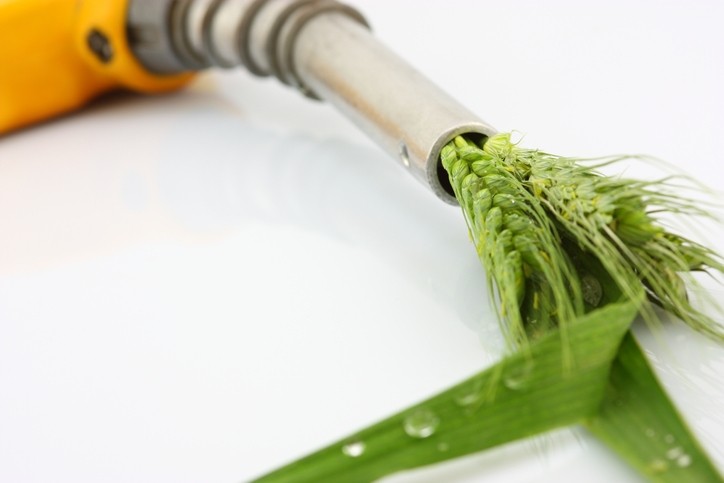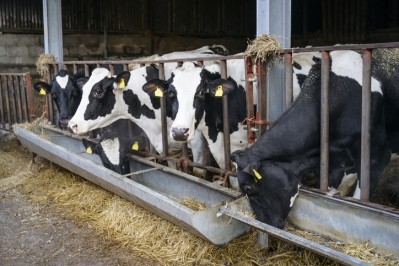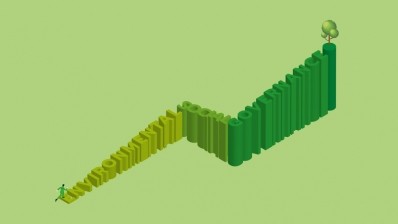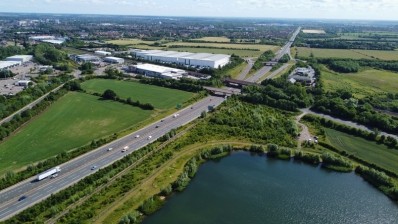AIC rejects WWF recommendation to limit livestock and exclude cereals from feed

The WWF published a report, entitled The Future of Feed, in early July, which called for a “rethink” on the UK’s “inherently inefficient” approach to feeding farm animals foods that humans can eat. 40% of the UK’s most productive agricultural land is used to grow food for farm animals instead of people, it reads.
The authors claimed this was “fuelling the climate and nature crises” and outlined a strategy for replacing animal feeds like soy and cereals with alternatives like grass, food by-products and insect meal.
The WWF claimed the ecological burden of feeding the UK’s livestock is out of proportion to the contribution made by meat, eggs and dairy to calories and protein in the UK diet. It said grazing and crops grown for animal feed combined represent 85% of the nation’s total agricultural land footprint - at home and abroad - whilst supplying only 32% of its calories and 48% of its protein.
“This is because the way in which we currently produce much of our animal source food is inherently inefficient,” wrote the authors. “Rather than consuming the products of animal agriculture fed on crops that humans can eat, it would be more efficient, in terms of land use and inputs, for people to consume those crops directly.”
The paper explored the idea of limiting livestock numbers in the UK to what could be supplied using feed that doesn’t compete directly with human food. This would mean excluding feed inputs that might otherwise be edible by humans, such as cereals and vegetables, as well as inedible feed inputs produced on land that could otherwise have been used to produce crops for people.
Removing cereals from animal diets 'wrong place to start'
James McCulloch, head of feed at the AIC, the UK agrisupply industry’s trade association, argued that producing less livestock in the UK would just lead to increased imports of meat and dairy from Europe and further afield to meet market demand.
“We, the feed industry, respond to demand from our customers, the livestock producers; they respond to demand from their customers, food processors; and retailers put the products that consumers want to buy on the shelves. I’m not saying you can’t change any of that but to suggest that it is the feed industry’s job to solve this so-called issue…I don’t think it is,” he told this publication.”
According to McCulloch, eliminating cereals from animal diets would be problematic on a number of levels, creating a nutrition gap in animal diets as well as potentially threatening food security through short-term supply shortages.
“Animals need starch and fiber in their diet - which they currently get from cereals and other crops. When you look at alternative feed sources such as carbon capture single cell organisms and microalgae, they are very high in protein but contain very little starch and fiber, so we would have to make sure we were delivering on the nutritional requirements of animals,” he said.
Another issue with exclusion of cereals from feed diets is that many of the replacement feed sources are new technologies that are not yet commercially scaleable, said McCulloch.
“We are currently importing 2.5 million metric tons of soy annually. If we could replace a large proportion of this with insect protein that would be a very good idea, but it is the scale that is the challenge. Plus the safety of any of these novel proteins will have to be assured. It is going to take time to deliver a commercial offer that is scalable and safe. It’s not a hurdle but it is something we have to be pragmatic about.
"They are of no immediate value unless we can get sufficient quality and quantity. We want to improve our food security rather than reduce it, after all,” he said.
McCulloch also pointed out that what this policy doesn’t take into account is that not all crops are fit for human consumption.
“A lot of farmers aim to grow food grade grains as they get a premium for, say malting barley and milling wheat, but quite often they don’t make the quality grade. That might be down to the gluten or protein content, or because the crop is too wet or dry, or because there is a mycotoxin in there that is not suitable for humans. If you deny farmers the feed outlet, you end up with them not being able to sell crops that aren’t suitable for human consumption.”
A 'curate’s egg report'
Asked for his view on the report as a whole, McCulloch likened it to a curate’s egg, saying: “some parts are excellent whereas in other parts, the feed industry would take exception to some of the assumptions.”
He said the main issue the feed industry has with the report and its recommendations are that “a lot of the things the WWF is identifying as progress are already in place or happening”.
Here McCulloch is referring to the report’s recommendations to develop low opportunity cost feed - in other words, feeding livestock grass, food industry by-products and food that would otherwise be wasted, and innovating in areas such as insect-rearing, microbial proteins from fermentation and seaweed.
With regard to residual food, for example, McCulloch pointed out that “the feed industry is already taking an awful lot of pasta, bread, chocolate and biscuits and processing them into high value [feed raw materials].”
And in terms of innovation, he said that there is some “amazing” R&D going on in areas such as insect meal, microalgae and carbon capture - “most of which is being sponsored by the feed industry”.
Grass digestibility
He said the AIC agreed with the report’s recommendation that more could be made of grass and forage as a low opportunity cost feed source. “We could be so much better at grassland and forage management but it is just part of the mix,” he said.
Going one step further than the report, McCulloch said that there are currently several projects focusing on processing grass to make it digestible to pigs and poultry. “Improving the digestibility of grass for monogastrics would be a really good area to spend some money,” he noted.
No mention of biofuel competition
Whilst the AIC is wholly supportive of the concept of using more food co-products for animal feed, it is disappointed that the issue of competition from the bio-energy sector barely registers in this report.
“Is it right that really good land that could produce food or feed is used to produce bioethanol or is going to Anaerobic Digestion (AD) plants?” he asked, citing spent grains from Scottish distilleries as an example of a food co-product that can be used in high value animal feed yet is currently ending up in AD plants because it is in the commercial interests of distilleries to produce their own energy.
He acknowledged that ultimately, the impetus to divert co-products to feed rather than bio-energy would have to come from government policy, and welcomed the WWF’s recommendation for a joined up sustainable food policy.
“If you are going to have a food policy that includes feed, you should look at your energy policy as well,” he said.








